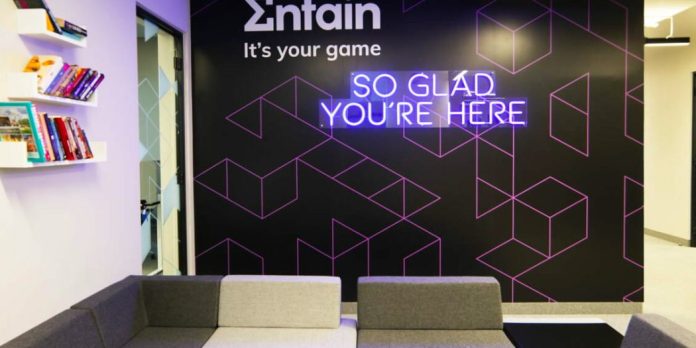If state-of-the-art technology and marketing expertise can be used in combination as a highly-effective player acquisition tool, they can do exactly the same for player protection, Entain’s Group Operations Director Peter Marcus told Issue 27 of SBC Leaders magazine.
When a member of the Entain’s management team says that, “the board are 100% supportive of it. I would say I get more questions each month from the board than anyone else on how’s it going”, you could be forgiven for thinking that the project he oversees is a new revenue-generating powerhouse.
What Group Operations Director Peter Marcus is actually talking about is the company’s safer gambling efforts and in particular its state-of-the-art Advanced Responsibility & Care (ARC) player protection programme.
The importance that the board and C-Suite have attached to ARC is illustrated by the fact that it was Entain’s second biggest project globally in 2022, with only the ongoing BetMGM rollout in the US attracting greater investment.
“They are interested in it because they understand the longevity of the business depends on things like this. And the board looks at longevity of businesses in the end, that’s their job,” Marcus said.
A grown-up conversation
The longer you talk to the man who oversees ARC about its capabilities, results and the mentality of ongoing improvement behind it, the easier it becomes to understand why Entain’s leadership team is sold on the idea.
ARC benefits from a somewhat unusual approach, in that it is not a compliance-led initiative. Instead, Marcus applies a marketer’s brain to the task and the result is a system that effectively operates like a CRM for player protection.
He explained: “It’s about how we identify people at risk and, most importantly, how we interact and intervene with those people at risk. Because it is so easy to do it the wrong way.”
The road from the launch of ARC to the success story it is today has involved what Marcus described as “an awful lot of test-and-learn, with a few failures along the way”.
The lessons learned from those failures have been invaluable, as they have disproved some seemingly logical assumptions and demonstrated what really works.
“We thought it was all going to be about subtle product changes that would change the behaviour of the customer, but they just noticed in about five seconds and asked where the feature had gone. So it didn’t really work,” he recalled.
“But what has worked is being honest and upfront and open with the customer. And also not making the customer feel that they’re anything abnormal.”
The methods of communication and language, which are such an important part of ARC’s effectiveness, have been developed with input from the Cambridge Division on Addiction at Harvard Medical School, Professor Mark Griffiths at Nottingham Trent University, and Epic Risk Management.
“They helped us to understand how to talk to customers who may be at the beginning of a journey that they shouldn’t be getting into and don’t want to get into, and we don’t want them to get into,” said Marcus.
“How you talk to the customer, how you communicate with them, what you say, when you say it, and where you say it, is so important. That’s what makes a fundamental difference, actually, for a customer.”
The answer to the ‘when’ part of that equation is more often than not ‘right now’, rather than ‘once we’ve had chance to analyse the data’. Of course, immediate interventions require real-time monitoring.
“One of the most successful parts of ARC is unusual deposits, because we’ve gone real-time – we’re the first company to ever go real-time,” said Marcus.
“What we found was that if we use an algorithm which looks at a customer’s regular deposit habits and it looks at their deposits now compared to normal, it identifies deviations from their usual behaviour.
“Then you can communicate with them in real-time as they make their next deposit and let them know ‘you are depositing more than you usually do’.
“That has more impact than any other mark of protection, or interaction, or intervention, or a ban on marketing. Because it’s treating people like adults – and that’s how they want to be treated.”
Entain does not rely on that first intervention. If the behaviour continues, a player will be required to set a relevant gambling control and keep it in place for a specified period. After that, the next step is a 24-hour stop and the chance to consider their habits.
“What we found through all of our research and analysis is, not only does the customer stop, when they come back – and most do come back – the problem behaviour goes away and, in most cases, does not return,” Marcus added.
Markers of Protection
Central to Entain’s player protection policy is early identification of potentially problematic behaviour.
To achieve this, ARC has built on the original nine Markers of Harm idea developed by Senet Group and PwC – “advanced for its time, but far less valuable since the UK Gambling Commission removed credit cards and reverse withdrawals” – and now uses 26 Markers of Protection.
Each marker has a weighting, with behaviours that have proven to be the strongest indicators of a player being at risk of developing a gambling disorder setting off the system’s loudest alarms.
Three of the markers have emerged as key signs of intervention being necessary. Perhaps surprisingly, total spend is not one of them, as the ever-growing volume of player data suggests that this is a lagging indicator of a problem.
Instead, Marcus picked out spend from norm (depositing or losing more than usual), time on site, and chaotic play as the three biggest warning signs that a customer may be developing an issue.
“What chaotic play means is you’re staking up and down quite a lot,” he explained. “People call that chasing losses, but it’s not always chasing losses – often it’s chasing wins or playing a scheme you think works. In the end, you’re constantly changing your bet amounts.
“That actually is a very high marker. We find that again and again and again. It’s a very high marker that you’re chasing a dream rather than playing for entertainment.”
The model is constantly evolving. As more data is collected and compared against a target group of players who self-excluded for problem gambling purposes, machine learning technology changes the model.
Entain also employs the Mindway AI model, which has a different target group based on a number of experts who are rating customers.
While Entain’s in-house model tends to find shorter-term problem behaviours, Mindway AI focuses on the potential of becoming a problem gambler and tends to identify longer-term patterns.
There is only a 20% crossover between the players found by the two models, so together they provide a comprehensive approach to identifying where the operator needs to intervene.
While this amounts to an industry-leading player protection strategy, Marcus wants to go further. “We have started working in AI to build additional even smarter models, and in time we’ll add more of these models,” he said.
Helping players to help themselves
Entain also has a range of controls that players can set, and they go far beyond the staple focus of responsible gambling adverts – deposit limits.
While deposit limits have a use, Marcus believes that the controls available to players should be broader, more tailorable to the individual’s circumstances and more imaginative.
His team has invented a selection of new controls, including ‘curfew’, which allows players to set times of the week when they cannot deposit any money, and ‘play breaks’, which gives the customer the ability to pre-programme a timeout into all their gaming sessions.
This is backed by a player education programme. “We send a series of educational emails for the first four months after the customer first joins, with a number of videos explaining why and how to use our gambling controls as well as monthly reminder messages after that to help make better decisions about their play.”
And there are also educational real-time messages in certain circumstances.
“We’ve got a new product called ‘Big Wins’, where if you have a big win on a single bet, we immediately show you a message,” Marcus said.
“It effectively says ‘we find that people who don’t withdraw at least part of a big win, often lose the whole lot back. Think about how much you want to withdraw and do it now’.
“People can’t believe we do that, but the aim of the game is a recreational, sustainable long-term customer base for enjoyment and entertainment. If you have that mentality, actually that makes perfect sense to do that.”
Perhaps most pleasing of all for Marcus is that the project is not just delivering results in terms of protecting players, it is also being greeted positively by those it is designed to protect.
“My biggest fear was that it would anger them,” he admitted. “But it hasn’t – affordability, by the way, absolutely angers people – but this doesn’t and I think there are two reasons why.
“The first is that we are so careful how we communicate with them and talk to them and explain to them why. So they get it. They realise we’re doing the right thing for them at the right time.
“Also, we’re putting short-term actions on the customer. We’re not saying you’re bound to six months, we’re saying take a break. And we force them to set a gambling control, which they then can’t take off for at least seven days after they come out of that high risk category. So we’re actually helping them to help themselves.
“All our research indicates that customers appreciate it and we’re certainly not seeing lots of complaints. Most importantly, we’re seeing them come back and then play more sustainably.
“For me, that’s the best evidence of all that it is working.”
Don’t forget to subscribe to our Telegram channel!










